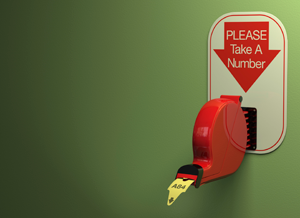
Why Does It Take So Long to Be Paid?
 Here’s a topic almost assuredly off the radar for many bank boards: real time payments. Don’t fall asleep yet. This will be of increasing importance in the years ahead.
Here’s a topic almost assuredly off the radar for many bank boards: real time payments. Don’t fall asleep yet. This will be of increasing importance in the years ahead.
Commercial customers are definitely in need of such a solution. For business customers, getting paid quickly is far more important than for most consumers. For both business customers and their vendors, checks introduce unpredictable cash flow: slower payments for the vendor, and uncontrolled float for the payer. Businesses are constantly dealing with cash flow management. It often takes 60 or 90 days to get paid after sending an invoice. Some suppliers need to drop tens of thousands of dollars of equipment or supplies off at a customer’s doorstop. Why can’t they be paid right away, instead of waiting around with their valuable goods on someone else’s property? Why do businesses have to preload deposit accounts or prepaid cards to make sure their employees get paid in a timely manner, on payday?
Online bill pay is no solution, says Bob Roth, a managing director with Cornerstone Advisors, a consulting firm in Scottsdale, Arizona. Twenty percent of payments through online bill pay end up as checks anyway, because the bank has no electronic information on the receiver of the payment. That means a payment can take six days or more to arrive by mail. Eighty percent end up as ACH (Automated Clearing House) transfers, but that can take 12 to 36 hours as well, Roth says. MineralTree founder BC Krishna said he tried to open an ACH account at a bank once, but the bank charged $250 for the application, $50 per month for the account, $20 per ACH file transmitted to the bank, 15 cents per transaction and required him to fill out a credit application. Not surprisingly, this pricing and process is geared towards larger businesses with a higher payment volume. Prepaid credit cards are fast, but they’re also expensive.
If businesses can find something easier and cheaper, they probably will. Seventy-five percent of business owners told the Federal Reserve in a 2013 survey they would prefer their payments be made instantly or within one hour. With thousands of financial technology companies popping up on the landscape trying to reinvent the financial system, there could be a few disrupters in the bunch offering a quicker payment solution. Person-to-person payment networks such as Dwolla and bank-owned ClearXchange already are offering faster (and cheaper) solutions, but they are mostly concentrated on the consumer and small business side of the equation.
In bigger businesses, there are multiple people who have to sign off on an invoice, so emailed invoices often get printed out anyway and the entire payments process is fairly complex, says Rick Hall, an analyst at Mercator Advisory Group in Maynard, Massachusetts. “Businesses have really been looking for ways to not only streamline the process but find the best alternatives,’’ he says.
It may be years before a truly speedy and cheaper alternative exists for commercial businesses trying to make payments. Krishna is a member of the Remittance Coalition, a 240-member group of public and private interests, including members of the Federal Reserve, trying to address some of the obstacles that keep businesses from using electronic alternatives to paper checks. The Federal Reserve is pushing for faster payments, but there are so many different players and legacy systems communicating with each other that a unified set of strategies is hard to implement. The core processing companies FIS, Fiserv and ACI, which each have hundreds or thousands of bank customers that could communicate with each other, are all working on their own real time payment solutions as well, according to Hall. NACHA, The Electronic Payments Association, which administers ACH, also is working on its own solution called Same Day ACH, which was recently approved by its membership. Under NACHA’s plan, same day ACH transfers begin in phases starting in September of 2016.
But in the meantime, someone may come up with an even better, faster, cheaper and ubiquitous solution. Person-to-person payments are all very exciting, but the consumer side of the equation is a fraction of the payments being made between businesses every day. “The real opportunity is going to lay on the business side,” Hall says. And business customers really are the focus of a great many community banks’ business plans. It will be important not to lose sight of their needs.


